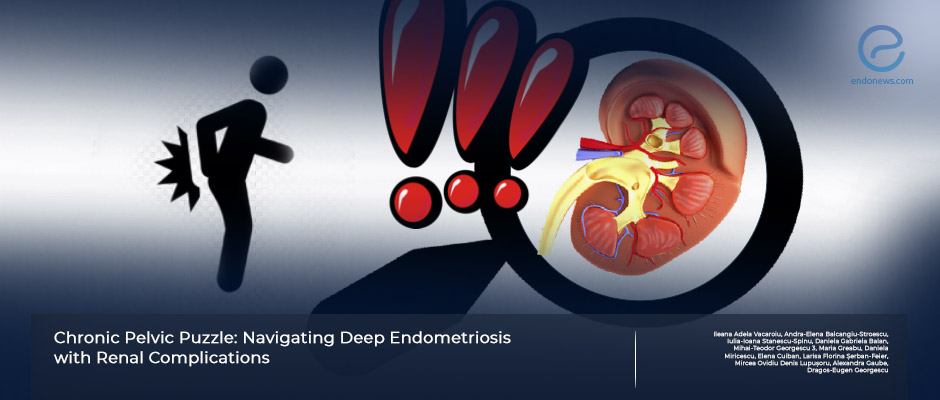Beware of deep endometriosis involving ureter
Feb 7, 2024
Interdisciplinary collaboration is of utmost importance in revaling endometriotic urinary tract involvement
Key Points
Highlights:
- Less than 1% of endometriosis resides in the urinary system and frequently remains undiagnosed due to clinically unapparent progression of the process.
Importance:
- There is a potential risk of kidney impairment if diagnosing urinary endometriosis lately due to delayed surgical intervention.
What's done here:
- A case report of a 48-year-old woman without any remarkable past medical history except two cesarean deliveries presenting with dysuria, polyuria, urgency, and hydronephrosis of one kidney.
Key features:
- An exhausting clinical workup finally ending in laparoscopic visualization and histopathological examination revealed extensive endometriosis foci in various pelvic and renal structures, leading to hydronephrosis.
- This case emphasizes the importance of timely diagnosis and surgical intervention to prevent kidney impairment besides interdisciplinary collaboration with histopathologic assessment in revealing deep endometriosis with renal involvement.
Take home message:
- Deep endometriosis should be managed via multidisciplinary collaboration.
Lay Summary
Dr. Vacaroiu and colleagues from the Romanian academic milieu have published a case report of urinary tract endometriosis that could have otherwise resulted in kidney failure when remained undiagnosed. This case appeared in a recent issue of the Journal of Clinical Medicine.
Extrapelvic endometriotic lesions are more commonly revealed in the 4th decade and are generally diagnosed about 5 years later than genital lesions. Less than 1% of endometriosis occurs in the urinary tract, often due to its subclinical progression. hydronephrosis is a complication of obstructive urinary tract involvement and even may involve both ureters in patients with extensive pelvic endometriosis.
The presented case is a 48-year-old woman without any remarkable past medical history except two cesarean deliveries presenting with dysuria, polyuria, urgency, and Grade II hydronephrosis of the left kidney.
Imaging studies were performed to determine the optimal clinical management. A contrast-enhanced abdominal CT revealed Grade II left-hydronephrosis, with low-level stenosis besides the uterus having a dense image posteriorly. The patient underwent a subsequent pelvic MRI and finally laparoscopic visualization and histopathological assessment of biopsies were obtained. The microscopic evaluation of the tissue biopsies revealed the extensive presence of endometriotic lesions in various pelvic and renal structures, ultimately leading to left hydronephrosis.
Deep pelvic endometriosis is an important clinical situation, the presentation of urinary tract symptoms adds complexity to the diagnosis, making it more problematic. The nonspecific symptoms associated with ureter involvement may unfortunately nay cause misdiagnosis, which may cause kidney damage via obstructive changes, i.e. hydronephrosis. This case report underlines that timely diagnosis and surgical intervention all need interdisciplinary collaboration with histopathologic assessment in such unexpected clinical dilemmas.
Research Source: https://pubmed.ncbi.nlm.nih.gov/38202227/
urinary endometriosis hydronephrosis histopathology laparoscopy biopsy multidisciplinary

